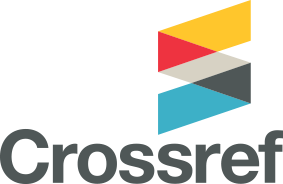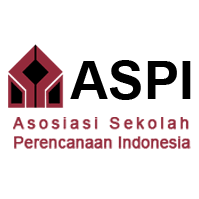Pola Permukiman Desa Petungsewu Kecamatan Dau, Kabupaten Malang
Abstract
The settlement order is affected by non-physical aspects of the residents, one of which is the culture and beliefs. This condition occurs also in the Java community, which has unique characteristics, which is referred to as community aboge (Alief-Rebo-wage). Embodiment neighborhoods in Javanese culture is divided into components longkangan, palungguhan, panepen and panggonan, while community characteristics that affect the space between the other side of the trust, social ties, personal expression and meaning.Using a descriptivequalitative analysis tools, mental mapping and behavior mapping approach, it can eventually be known to the unique characteristics of its people, and of course the settlement pattern is formed. The purpose of this paper is to formulate the settlement patterns formed in the village Petungsewu, which is associated with the unique aspects of the characteristics of the population and community beliefs. Based on existing studies found that at least the character of the existing society is divided into three communities, namely kejawen aboge, community of santri, and ordinary kejawen, which is spreading on the West side, Central, and East Village. Special characteristics of the community kejawen aboge main puller factor of this study is the use of a calendar that affect the use of time, and in turn also affects the fabric of space. Each community has a specification of the characteristics, the one that belongs to the kejawen (regular or aboge) is of the belief in pedhanyangan space, and also the conception sedulur / keblat papat lima pancer, as well as the principles of neighberhood harmonization, namely moncopat. Settlement pattern which is formed from the merger of clusters and linear patterns, formed by the linkage between the various components of the type of longkangan space, palungguhan, panepen and panggonan in a variety of scales, linear orientation toward the west-to-Srandil Panderman Mountain and the direction of Qiblah, and also the hierarchy existing space to put the home space aboge figures, pedhanyangan space, and fields loom as the most important space-forming pattern of the village space.
Keywords : Settlement Patterns, aboge Javanese community, Petungsewu Village
Downloads
Published
How to Cite
Issue
Section
License
Authors who publish with this journal agree to the following terms:
- Authors retain copyright and grant the journal right of first publication with the work simultaneously licensed under a Creative Commons Attribution License that allows others to share the work with an acknowledgement of the work's authorship and initial publication in this journal.
- Authors are able to enter into separate, additional contractual arrangements for the non-exclusive distribution of the journal's published version of the work (e.g., post it to an institutional repository or publish it in a book), with an acknowledgement of its initial publication in this journal.
- Authors are permitted and encouraged to post their work online (e.g., in institutional repositories or on their website) prior to and during the submission process, as it can lead to productive exchanges, as well as earlier and greater citation of published work (See The Effect of Open Access).


















